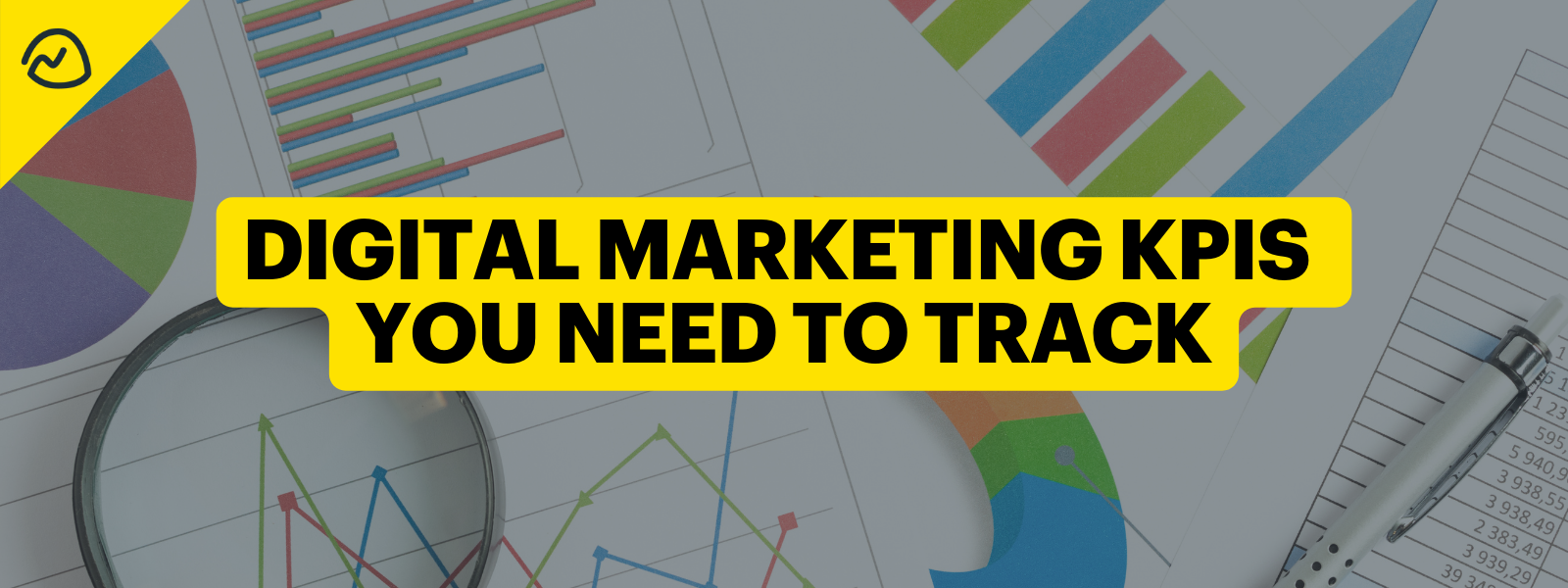Digital marketing has changed significantly in the last few years. Anyone who tells you differently doesn’t actually spend time in many online spaces. And if the trends — what people consume, what types of ads work — continue, your digital marketing KPIs (key performance indicators) have to change with them.
Whether you’re the head of marketing at a company or run your own digital marketing agency, the numbers are important. They’re how you make decisions, what you bring to clients to showcase your progress, and ultimately where you spend time and other resources.
In recent years, there’s been a huge emphasis on KPIs in the business world, including some hot debates about which ones are most important.
While you definitely don’t need to track every KPI available to you, it’s important to at least know your options and the value of understanding each one, especially in the rapidly shifting world of digital marketing.
Track Your Marketing KPIs According to Your Goals & Specializations
You don’t need to waste your time on tracking every single metric available with today’s technology. You just have to keep track of the ones that matter most to your goals and what you were hired to do.
But even in a buying process, there are different phases a prospect has to go through.
- Getting eyeballs on your product (Awareness)
- Getting prospects to become leads (Consideration)
- Converting leads to customers (Purchase)
You’ve probably seen this most consistently as Top of Funnel, Middle of Funnel, and Bottom of Funnel, respectively. But there’s one more metric that’s really important (now more than ever) — Brand Reputation — which quantifies whether or not customers continue to buy from you (LTV) and how they feel about that purchase and overall experience with the company. Do they tell their friends? Is the brand spoken of well and shared about in digital spaces?
You probably think Brand Reputation is not really trackable, but you’d be surprised. More on that later…
Spend your time focusing on whichever metrics you’ve been hired to manage. Sometimes, that’s all of the phases of the customer journey. Other times, it might be an isolated segment.
We’ll cover all of them.
Digital Marketing KPIs: Broken Down By Mechanisms
Money is always the goal, we know. But you can’t get more buyers unless more prospects know about your product in the first place. This is the catalyst for everything, and in the current digital world, one of the hardest to grow.
Competition is growing. Industries that were barely kicking a couple of years ago are coming to life in ways that would impress even Frankenstein. Which makes getting traffic difficult. But those eyeballs alone aren’t all you need to pay attention to.
What is that traffic doing? What is it resulting in? Who is that traffic and are they the core customer of the product/service you’re tasked with selling?
Let’s break down some traffic numbers.
Core KPIs to Know, Track, and Measure
These are typically the results of more granular KPIs we’ll get into below. They’re your bread and butter, helping you determine whether or not your marketing efforts are actually working. These are the numbers your client will most likely ask for, as they’re likely the ones being used internally by the client (and their boss) to gauge performance.
CPA - Cost Per Acquisition
You definitely have to showcase how much money a company is spending to acquire a single customer. The less money spent, the more profitable the company. But keep in mind that you can also calculate the cost to acquire a customer for each platform: organic, paid, social media, and even email.
Many things go into the overall cost to acquire a customer, so if you’re an agency, you might not have access to all of that data. But you can calculate the CPA for your agency to give your client a round number.
Don’t forget to calculate the fee you’ve been paid with the money spent on ads when finding this number for your client.
ROAS - Return on Ad Spend
This is your ROI on ad money. Of the money you spend, how much do you make back extra. Obviously, the higher your ROAS, the more profitable the company. This number will widely vary depending on industry, ad costs, type of ad, and even business model. The calculation is simple: amount made / amount spent. If you spend $1,000 and make $3,400 from those ads, you have a 240% return on ad spend.
Cost Per Lead
You’ll have a couple of these numbers depending on how many methods you’re using to collect leads. It’s easier to calculate this when you’re using ads, since you’ll calculate the number of leads divided by the amount you’ve spent. Again, calculate labor costs here for the most accurate number.
Average Time to Close
Depending on the product or service being sold, it can be really important to know just how long someone is on your list or in your ecosystem before they buy. Is it minutes, days, weeks, or even months? This best helps you accurately project numbers and growth targets. In a high ticket company, this is more important because it often takes a longer nurturing process (including a phone call with a sales rep) before someone will spend thousands of dollars.
Website Traffic KPIs
Who’s visiting your website, for how long, and where they come from is major information you need to consider in your marketing plans. These KPIs are the best to track to know where you stand:
Total Unique Visitors
Every unique IP address that lands on your site will be counted as a “visitor”.
Pageviews
Every page that’s viewed will be counted as this number, meaning one visitor may “visit” several pages, and it would track the total pages visited (which is why this number is typically larger than total visitors).
Organic Visitors
This is traffic generated from search engine sources (not just Google, there are other search engines out there). For digital marketing purposes, this number is important because it’s typically the cheapest cost to acquire a customer and has a big impact on how well your ads perform (lends you more IPs to retarget).
Direct Traffic Visitors
Direct traffic is usually when someone can type the link in the URL without a middle-man. While this isn’t the single most important number, it can tell you how much name recognition the site has and even if people are bookmarking pages (bookmarked pages show up as direct traffic in Google Analytics)
Bounce Rate
This metric tells you how your site’s pages (and content within) are performing. Technically, the bounce rate percentage is calculated by the number of people who visit a page on your site and then leave without visiting any other page. A high bounce rate means a user didn’t find the content relevant to them (or couldn’t find what they were looking for quickly or even that they were bothered by the incessant pop-ups and interruptions). Stay below 40% bounce rate to be on the better side of average.
Time on Page
This KPI is mostly useful to make sure people are consuming the content on the webpage. If you have a blog post that’s 2,000 words and the average time on page is 2 minutes, they’re skimming, not getting the most out of it, and you’ll want to revisit. Higher time on page usually correlates with a higher traffic-to-lead conversion rate. While some advice you’ll read will say a good time on page is about a minute, that’s not consistent with what would be a quality web experience. How long would it take you to read most or all of your webpages? Shoot for that time.
Average Visit Duration
This tracks how long your visitors are staying on your website as a whole, including clicking to other pages. Obviously, a higher time is more promising because it means prospects are consuming more than one page of content.
Social Media Visitors
You’ll want to use these in combination with your social media KPIs to get a sense for how much of your social audience is making the jump to your website, which is the overall goal.
Social Media KPIs
Social is growing at significant rates thanks to the introduction of a primarily video medium that capitalizes on people’s rapidly shrinking attention spans. The KPIs you once used to track progress have shifted.
Instagram likes? Not as important anymore as shares or reel replays. Here are the social media KPIs to track moving forward:
Shares
Social apps are using this metric to simulate a “word of mouth” recommendation, which means when you share the post to your story, your feed, to a friend in a DM, or even via text or other messaging apps, it’s significant.
Replays (of videos)
The more a video is played on apps like TikTok, Facebook, and Instagram, the more they’ll be shared in the algorithm.
Saves
This is the equivalent of a bookmark, except social apps take it more seriously.
Comments / Engagement
Some social apps measure these all in one, but it can be important to determine how much followers are interacting with your brand in order to help it grow. Higher engagement will be promoted more often by algorithms because the purpose is to keep users on the app. If your content is proving to do that, then the algorithm will reward you for it.
Paid Media (Ads) KPIs
Where money is involved, you want to prioritize. In the case of ads, these are the digital marketing KPIs to keep in mind and help your clients understand.
Clickthrough Rate (CTR)
While impressions is a common metric tracked in advertising (and in many mediums, you’ll be charged based on the number of ads), clickthrough rate is a much better gauge of how your ads are performing. Take the number of clicks divided by the views/impressions, then multiply by 100 to find your click rate. For an ad that had 365 clicks and 12,000 impressions, your click rate would be about 3%. Ultimately, this shows you the conversion rate of the visual ad or written copy.
Cost per Click (CPC)
The cheaper the cost per click, the more effective the ad. Calculate this marketing KPI by dividing the amount you’ve spent by total clicks. If you get 3658 clicks and have spent $1200, your cost per click is about $.33.
Landing Page Conversion
Of the people who clicked the ad, how many opted in to the offer? Whether that’s to buy a product/service or to sign up for a lead magnet. Take your number of opt-ins divided by the number of landing page views and multiply by 100 to find this percentage.
ROAS
Your Return on Ad Spend is exactly what it sounds like; how much money are you making back from what you spent. The equation for this is detailed above.
Cost per Acquisition (CPA)
This one is specific to ads. So take the same formula from the above section to calculate this number using the amount you’ve spent on ads only.
Conversion Rate KPIs
This isn’t necessarily how many leads you get, but rather whether or not the leads you have are converting well.
Remember that while traffic numbers are important, they don’t tell the whole story (especially with social media).
Traffic without a conversion mechanism is just a vanity metric.
Traffic to Lead Conversion: How many people who view a page or offer are converting to a lead.
Lead to Customer Conversion: How many of your leads in any given month become a customer in that month.
Email Marketing KPIs:
- Open rate: what percentage of people who received your email have opened it. You want to average higher than 30% for effective email marketing.
- Click through rate: Of the people who opened your email, the percentage who clicked the link. This measures the quality of your copy.
- Click rate: The percentage of people who clicked the link out of the total number of emails delivered (not necessarily opened). This is mostly used to get a clear picture of the opportunity of potential clicks if everyone opened your email.
- Bounce rate / deliverability: an underrated email marketing metric you need to keep track of if you want to stay out of the dreaded spam folder. The more email bounces you have, the worse your email health will be.
- Time since last engagement / disengaged contacts: many email providers have added a metric that tracks how many unopened emails you’ve sent to someone. After a certain number of unopens, they label the contact as “disengaged”
Lead to Buyer Conversion Rate
Of the people who become leads, how many of them then bought? This percentage will typically go up if your email marketing numbers increase (if email is the primary way you convert leads).
Brand Reputation KPIs
More and more often, we’re seeing a customer’s buying decisions come down to not only what a product offers as a promise, but also what the company’s reputation is. This is highly connected to the desperate plea for transparency from companies, urging marketers to move away from the false-scarcity, fear-based marketing that took over the digital world (and even worked well) 5+ years ago.
Now, if you’re just the marketing agency and have nothing to do with the product, it’s easy to think that a brand reputation metric isn’t your job. If the product sucks, oh well! But brand reputation is made up of so much more than just the customer’s experience after they buy.
Reviews & Online Ratings
This one is obvious. What people say about you online becomes your reputation—even if it’s not always an accurate representation of how the majority of customers feel. It’s typically the loud minority who are unhappy with a product or service.
Social Shares
We already touched on this in the social KPI section, but the more your brand is shared (in a positive way), the better your brand is likely to be perceived online. Just don’t go viral for the wrong reasons—not all press is good press anymore.
Social Saves
If someone is consistently saving your content (whether social or bookmarking a blog post) it’s about trust and quality content. Nobody will save a blog post that isn’t useful, which can grow your brand reputation of quality content.
Referrals
This isn’t always easy to track but if your CRM can be optimized to track referral customers (or you create a referral program) with good rates, it’s telling you more about your brand reputation than much else. Backlinks to online content is also a measure of referrals (and counted as referral traffic in Google Analytics).
There are so many KPIs you can track in the digital marketing world. Not all of them will be important for your brand or business model. Track only what will propel you to make positive changes and don’t get bogged down with the rest.
If you’re looking for a better way to keep a handle on all your marketing, consider the all-new Basecamp. It’s the fastest, easiest way to organize your marketing teams, freelancers, and data. Get started today in just a few minutes (no credit card, no commitment).






